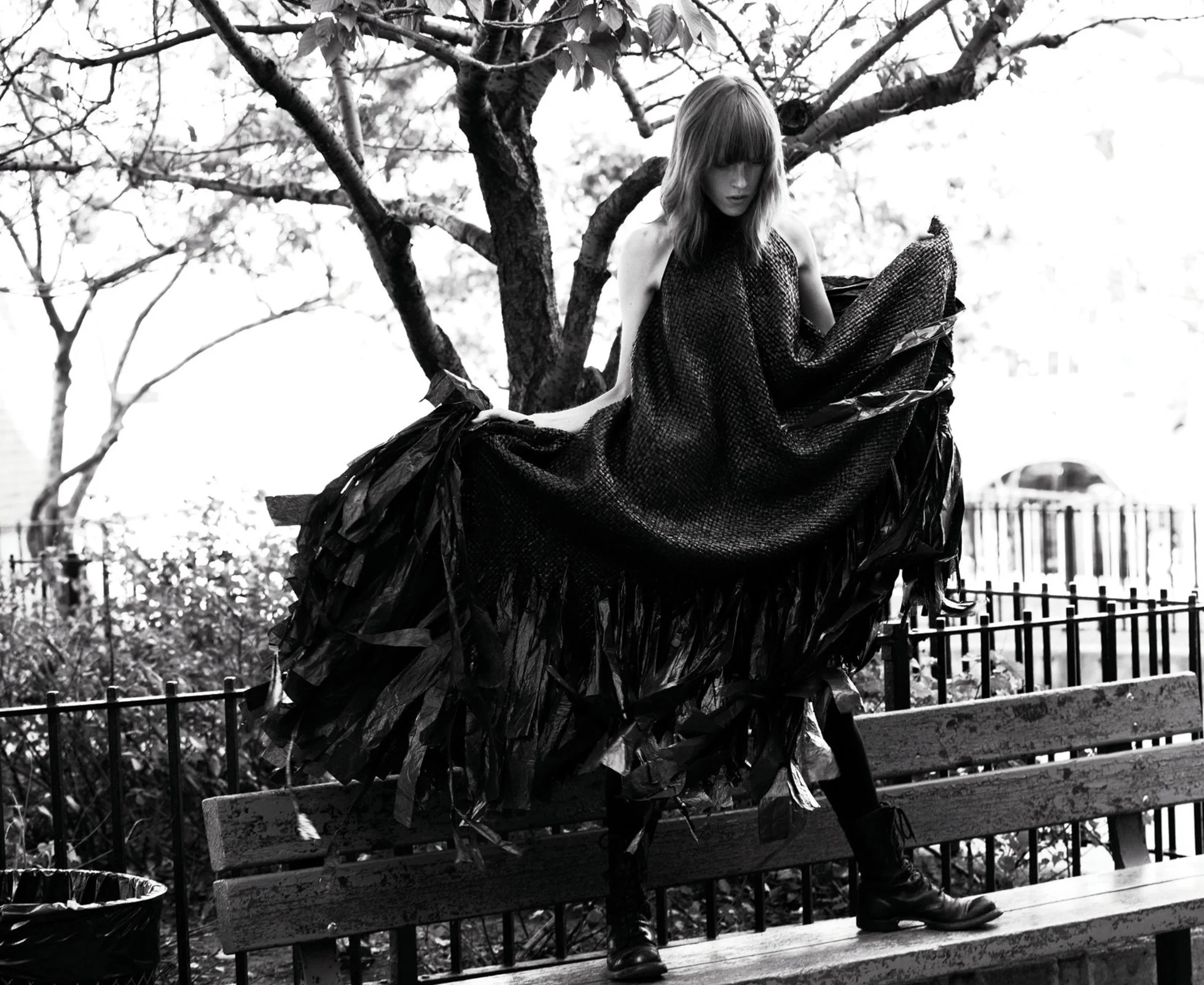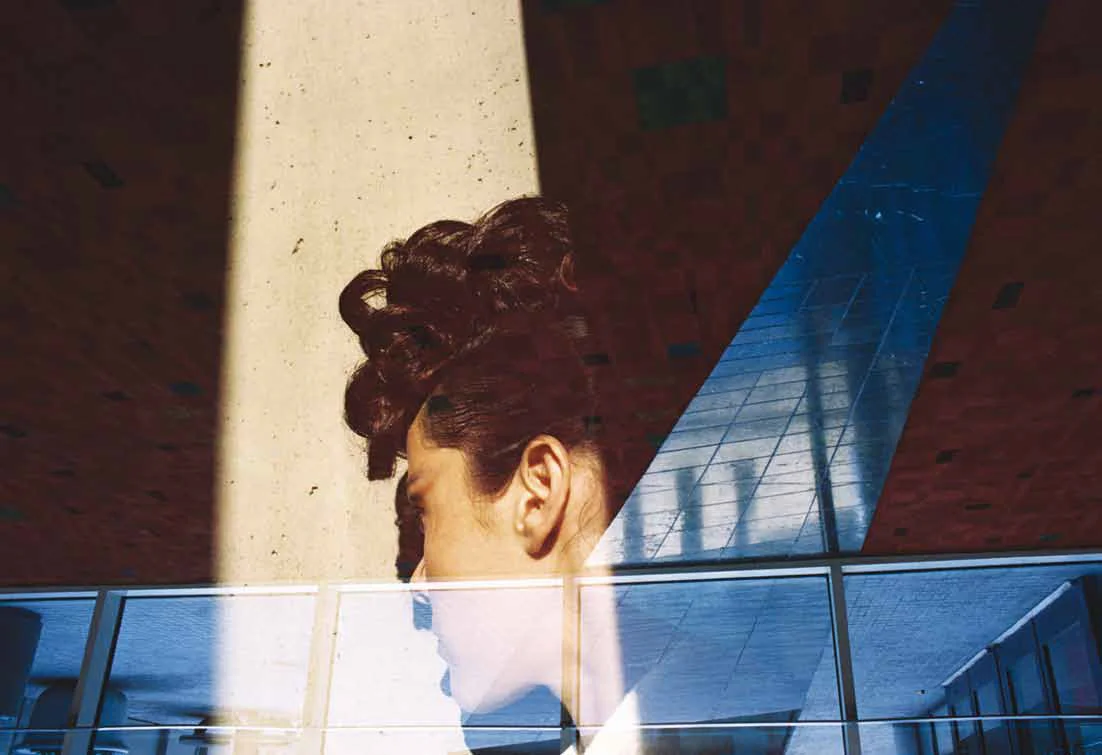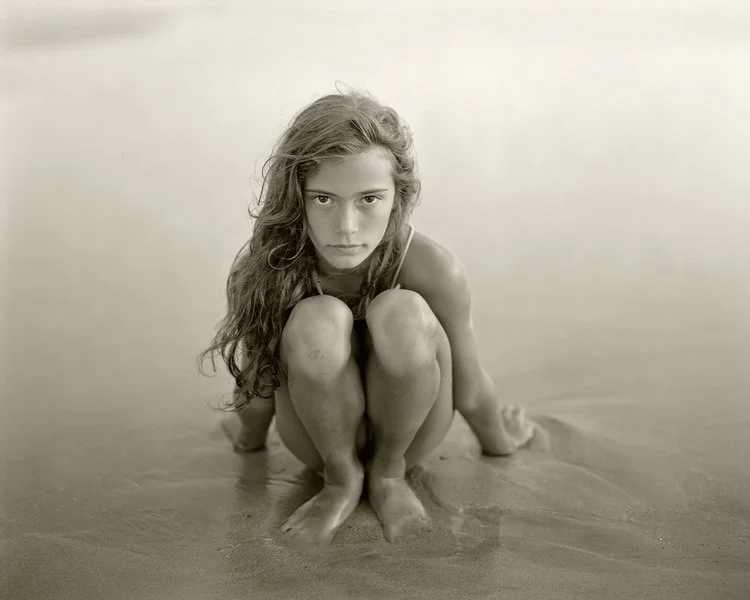Gareth Pugh
Little did I know that designer Gareth Pugh’s second largest passion is ballet and that he trained to be a classic ballet dancer up until his college years at Central Saint Martins in London. He speaks passionately to me about his collaboration with Wayne MacGregor, the choreographer of Carbon Life that was shown at the Royal Opera House in 2012, a project that led him full circle and onto the stage again, bowing together with the dancers, dressed in his designs. He also tells me about his desire to join the creative forces in London at a young age, his interest in sculpture and his favorite geometric shape; the cube, that for him stands for total control. He says: “I am a Virgo and on top of that somewhat of a perfectionist... so I think that it is always a nicer experience when you are able to take the time and consider where you are, what you want to achieve and what image you want to create...” I agree.
Ann: You started out doing costume design. Why were you were drawn to that?
Gareth: There were a few different reasons. I was fourteen and living in my hometown, Sunderland, and I really wanted to get down to London. I saw an advert from the Na- tional Theater and they were looking for people between fourteen and twenty one to be part of their youth theater and that included actors, set designers and costume designers.
Basically, I can’t act so I applied to be part of their costume department. I applied when I was thirteen, lying about my age, and I didn’t really prepare for my interview so I spent my year between thirteen and fourteen preparing a portfolio. When I finally interviewed (saying I was fifteen) they accepted me.
Going to London on my own at that early age was a real pull for me, so I stayed on working there for about three or four summers. There was a lot of “making things” and working with designers. We didn’t really design ourselves, it was more about fulfilling the adult designers’ visions. But, I did learn to sew properly and I learnt how to use a machine, which was new to me. It was also the first time for me being surrounded by like-minded people. It was all a very formative experience.
And then you moved to London...?
Yes! Spending all of that time in London when I was young made me want to live there when I got older. I then heard about Central Saint Martins. I was actually interested in studying sculpture. A lot of the things I was into at the time were related to the human body so I though that Central Saint Martins would give me the best of two worlds (art and fashion).
What triggered you to want to move into fashion?
Growing up and seeing the fashion industry very much from the outside, there were always the very dramatic and high impact things that really got my attention. OK magazine and other celebrity magazines in the UK put out collection review specials which I used to read. I still have them actually! They are from ‘95 and ‘96 and it was at the time when Tom Ford was at Gucci, and when Alexander McQueen was doing his big shows. To me, it seemed like London was a really exciting place to be. All of these people were doing really interesting things and I just wanted to be part of that in some way. It was a kind of foreign world, something that was very exotic to me.
“I am stuck between two minds a lot of the time. Obviously, I need to sell clothes but I also want to stay true to my vision.”
The “high impact” that you mention is something that you bring to your own shows. Do you see the runway as a sort of performance platform?
Well, in school we were given this pamphlet on how to get started as a designer. I think that the most interesting thing in that pamphlet was that it said, unless you have anything interesting to show, don’t do a show.
For me, a fashion show is definitely more about expressing an idea. Nick Knight says that he is not a photographer, but an image maker, and I certainly feel a lot of affinity with that. I don’t only make clothes, I also love making images and sometimes the clothes in a show transcends directly from an idea of an image. It is not always what you would ever see walking downthe street. Of course there needs to be a commercial aspect to it if you want to continue showing, but I certainly feel as if what I signed up for is not necessarily making clothes, but more about creating an image that excites me more than idea of “fashion”.
How do you translate your most conceptual ideas into commercial pieces?
Every season, we try to create something that can tran- scend into something more commercial. For example, in the collection we showed in march we had a lot of elaborate em- broidery (that looked like winter trees) on the bottom of some of the garments. Those embroideries gave us the opportunity to do printed t-shirts for example. However, we don’t want to sacrifice anything for the sake of being commercial. For example, we also worked a lot with bin bags in that same collection, and those pieces seem a little pointless to make commercial... I am stuck between two minds a lot of the time. Obviously, I need to sell clothes but I also want to stay true to my vision.
Can you tell me a bit more about the fall/winter 13/14 collection?
We were looking around for my idea of the perfect woman and we found a group of women who call themselves the Asgarda. They live autonomously to men and teach themselves martial arts. I always like to think of what I do as a kind of armor, and I liked the idea of them defending themselves. I saw these pictures online where they were wearing beautiful long gypsy-style dirndl skirts together with t-shirts and I really liked the idea of mixing something very historically feminine (the skirts) with something rather masculine (the tops). I also really liked how these skirts turned their silhouettes into a strong triangle; an iconic and very strong geometric shape.
As mentioned earlier, we also used a lot of trash bags in the collection, creating these pieces that took us hundreds of hours to make. Sometimes I think that what we do is a bit too masculine so I was very happy to slightly step away from that in this collection, although it still has that edge to it.
Speaking of geometrical shapes, I read that you de- scribe the cube as being your so-called “blank canvas.” What is it that appeals to you in a cube?
For me the idea of a cube is something that is so powerful, strong and graphic. It stands for what I strive for in my work; something that is powerful and quite visually strong as an image. I will always go back to that shape regardless of what a show ends up being. I think that it is my strive for making something just as perfect. But at the same time, as a creative, it makes no sense to make something that perfect because then you would just stop creating.
How would you describe your evolution as a designer since your debut show?
I still work by myself but I do have a lot more help than I did before (especially with my factory in Italy). I also have a different idea of what I want to show. Now, we do two women's’ collections and menswear so there is a lot to handle. When I used to show in London there used to be maybe seven outfits. Now that we have more to show, we don’t have to have such a boiled down collection. Since the collections are bigger, we can use those “extra looks” to create pieces that are more approachable and something that people come around to understand a little better. It is like building a sentence; if you have more words in a sentence, then you are able to explain a lot better. I can now be a little more broad and descriptive in my collection which I appreciate.
In addition you also dress celebrities, both on and off stage...?
We have done bits and pieces... It is always fun, especially since we have been fortunate to work with a large range of people (Marilyn Manson, Kylie Minogue, Lady Gaga). It is fun to do that because when two creative people meet and exchange ideas, it is not about me creating my own show. It is more about their vision which actually gives me some more freedom. With collaborations it is not myself I am pleasing but it is more about pleasing the client and they need to be just as happy as I am with the work. It is a different dynamic which is very enjoyable and it is a very big part of what I do.
Do you have a favorite collaboration that you are particularly proud of?
I did a ballet with Wayne MacGregor at the Royal Opera House. For me, that was really going full circle because early on I was training to be a ballet dancer and to do this collaboration brought me back to dance and clothes and movement. It also got me to do set design. It was like being thrown into the deep end because I had never done anything like it before. On that scale, it was kind of intimidating, but I think they were all very supportive of what I was doing. The moment of coming out on the stage on first night and taking a bow together with the dancers made it my perfect project. Also, Mark Ronson was doing the music with Boy George and Alison Mosshart was a part of it as well, which made it even greater. I had to dress them too and that really brought everything that I love to do into one project.
What is the difference for you between creating stage costumes and putting together a collection?
When doing your own collection, there are always boxes that you want to tick for yourself. Working on the ballet was more about taking an idea and spreading it out to a whole vision. With a project of that size the costumes become but a narrative of a greater vision, which in this case was the loss of innocence. It was much easier to communicate that vision in this particular project, I would not have been able to communicate that in a runway show.
Have you ever thought about doing costume design for films?
I would love to, it is just something I haven’t been asked to do. I would also love to do music videos and tours, but nothing has come around at the moment. But I love to challenge myself, so why not? I would be up for it!
Lastly, what are some of your favorite films?
I do love Cabaret with Liza Minelli and The Wizard of Oz. I also love the ‘80s films that have a really dark subtext but a glossy exterior. I think it is a nice analogy for what I do actually. It is about fantasy but also dealing with that fantasy on a daily basis. When you talk about Cabaret it is all about the glitzy, yet grimy cabaret in Berlin, and yet you have a very dark subtext that is very disturbing.
I recently watched Safe with Julianne Moore, and it is again one of those films that leave you feeling really cold, yet it has such a high level of impact. In general, for me it is more about theatrical films than about a certain genre or style.










